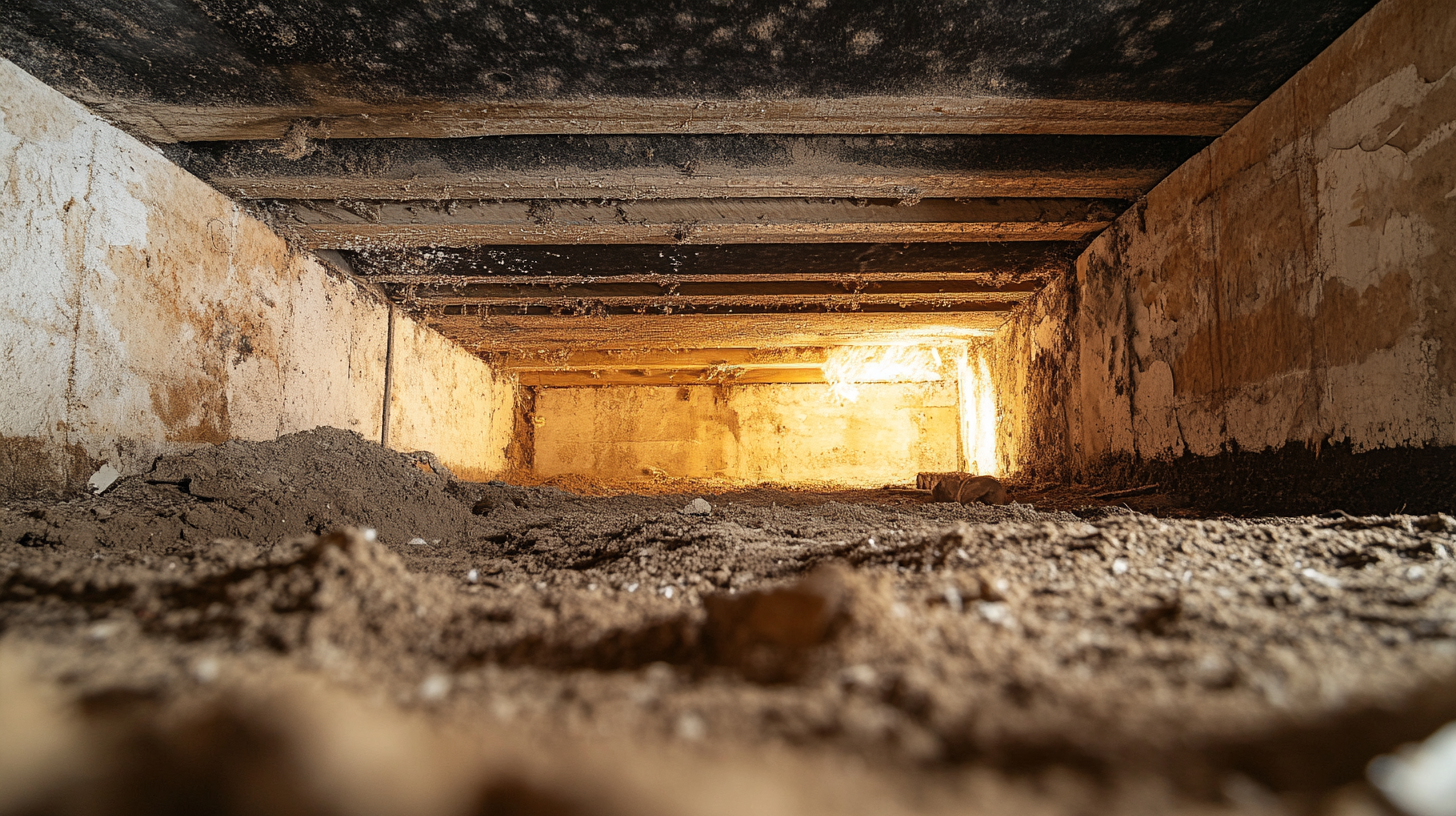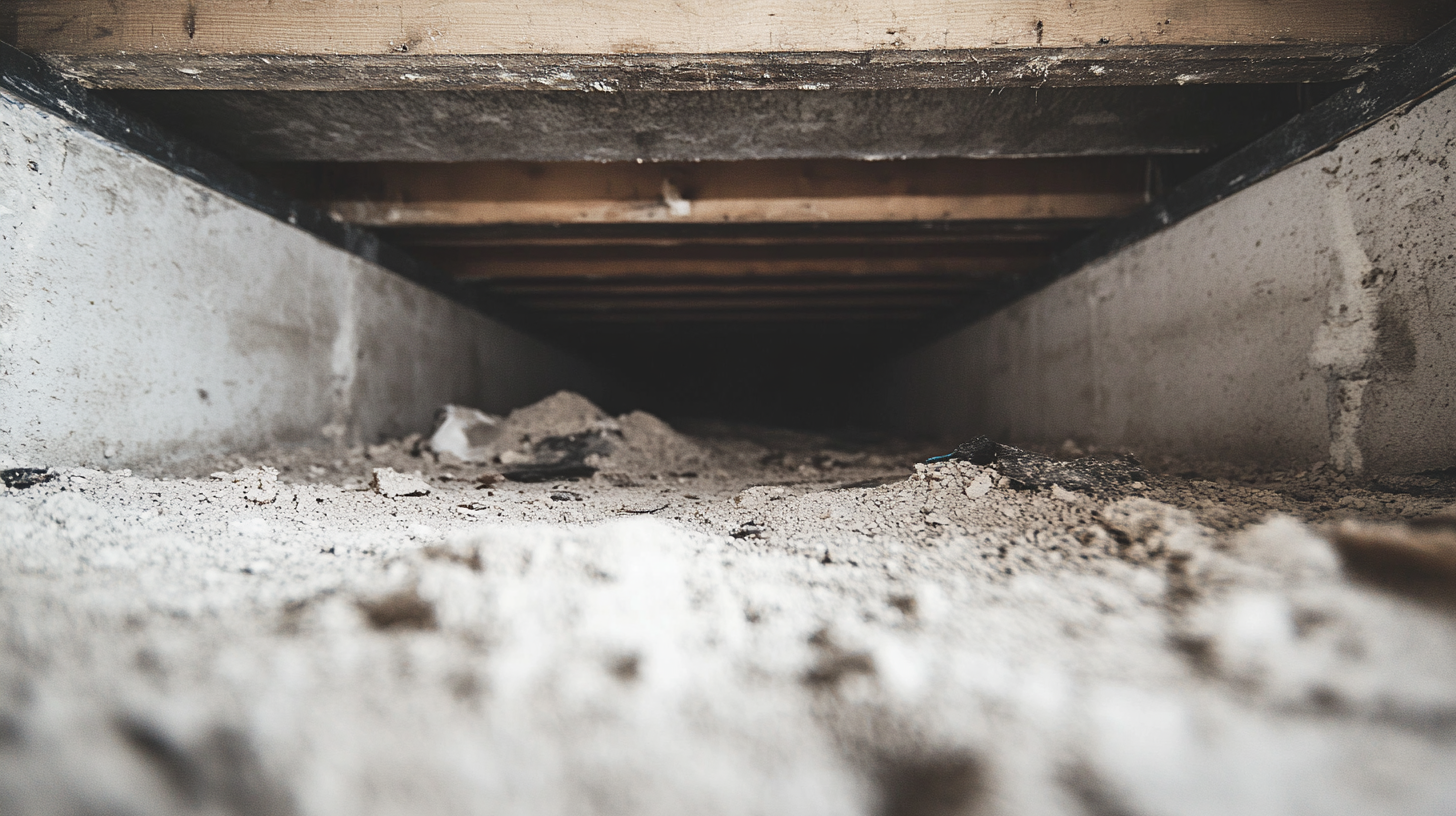Winter Heating and Soot: Keeping Your Home Clean

As the mercury dips and the cold winds start to howl, the warmth of our homes becomes our refuge. Winter, with its serene snowfalls and cozy nights, also brings the necessity of heating our living spaces to maintain comfort. However, this seasonal shift towards increased indoor heating comes with an often overlooked companion – soot accumulation. This phenomenon, while seemingly benign, can have significant implications for the air quality within our homes and, consequently, our health.
Soot, a byproduct of the incomplete combustion of fossil fuels, wood, and other organic materials, manifests as fine black particles that can coat interior surfaces and permeate the air we breathe. Its presence is not merely a matter of aesthetics; it is a marker of air quality issues that require our attention. Understanding the genesis of soot accumulation during the winter months is the first step towards mitigating its impact and ensuring the healthfulness of our indoor environments.
This blog post aims to shed light on the intricate dance between winter heating and soot accumulation. By delving into the conditions that favor soot production, the types of heating that are most likely to contribute to this issue, and the pathways through which soot particles infiltrate our living spaces, we equip ourselves with the knowledge needed to address this silent intruder. Our journey through the shadows of winter heating will not only illuminate the challenges posed by soot accumulation but also chart a course towards practical solutions for maintaining a clean, healthy home environment amidst the chill of the season.
Understanding Soot from Winter Heating
As the winter season unfolds, the reliance on various heating methods to keep our homes warm and comfortable significantly increases. While these heating solutions offer solace from the cold, they also introduce a less welcome guest into our homes: soot. This fine particulate matter, a byproduct of incomplete combustion, can have far-reaching effects on both the cleanliness of our homes and the quality of the air we breathe. In this section, we delve into the common sources of soot associated with winter heating and explore the impact of soot accumulation on home cleanliness and indoor air quality.
Sources of Soot in Winter Heating
Soot production is intrinsically linked to the combustion process, where incomplete burning of carbon-containing fuels occurs. During the colder months, several heating methods are commonly employed, each with its potential for contributing to soot accumulation:
- Fireplaces: Traditional wood-burning fireplaces are a significant source of soot. The incomplete combustion of wood releases fine soot particles that can coat interior surfaces and escape into the indoor air.
- Wood Stoves: Similar to fireplaces, wood stoves can produce soot if the wood is not burning completely. Factors such as the type of wood used, moisture content, and stove efficiency play critical roles in the amount of soot generated.
- Furnaces: Oil and gas furnaces can also be sources of soot when there is incomplete combustion of fuel. Poor maintenance, incorrect sizing, or inadequate ventilation can exacerbate soot production from these heating systems.
Understanding the specific conditions under which these heating methods produce soot is crucial for homeowners looking to minimize soot accumulation and its associated impacts.
The Impact of Soot on Home Cleanliness and Air Quality
Soot particles, while small, can have a significant impact on the cleanliness of home surfaces and the overall indoor air quality:
- Home Cleanliness: Soot particles can settle on walls, ceilings, furniture, and other surfaces, leading to staining and a general deterioration of the home's aesthetic. Cleaning soot from surfaces can be challenging, requiring special products and techniques to avoid further spreading the particles.
- Indoor Air Quality: Perhaps more concerning is the effect of soot on indoor air quality. Soot particles are small enough to be inhaled, potentially leading to respiratory issues and other health concerns, especially for individuals with pre-existing conditions such as asthma or heart disease. The presence of soot in the air can also contribute to odors and a general feeling of uncleanliness in the home.
Addressing the sources of soot and understanding its impact are vital steps in maintaining a healthy, clean living environment during the winter months. By implementing proper maintenance of heating systems, choosing cleaner-burning fuel options, and ensuring adequate ventilation, homeowners can significantly reduce the presence of soot and protect their indoor air quality.
Preparing Your Home for the Heating Season
With the arrival of cooler temperatures, preparing your home for the heating season is crucial not only for ensuring comfort but also for maintaining a healthy indoor environment. A key part of this preparation involves addressing potential sources of soot production from heating systems and ensuring proper ventilation throughout your home. By taking proactive steps for inspection, maintenance, and air circulation, you can significantly reduce soot accumulation and its associated impacts on air quality and home cleanliness.
Inspection and Maintenance of Heating Systems
Regular inspection and maintenance of your heating systems are essential practices to minimize soot production and ensure efficient operation. Here are some guidelines for pre-season checks and maintenance:
- Schedule Professional Inspections: Annually, have a qualified technician inspect your furnace, fireplace, wood stove, and any other heating systems. These professionals can identify and rectify issues that could lead to incomplete combustion and soot production.
- Clean and Replace Filters: For furnaces and heating systems with filters, ensure that these are cleaned or replaced according to the manufacturer's recommendations. Clogged filters can restrict airflow, leading to inefficient operation and increased soot production.
- Check for Proper Ventilation: Ensure that all vents and flues are clean and unobstructed. This allows for the complete combustion of fuels and proper expulsion of combustion gases, reducing soot accumulation.
- Monitor Fuel Quality: Use only high-quality, appropriate fuels for your heating systems. For example, seasoned hardwood is preferable for wood stoves and fireplaces, as it burns more completely than softwood or damp wood.
Ensuring Proper Ventilation
Good air circulation within your home is vital for reducing soot accumulation and maintaining indoor air quality. Here are some tips for ensuring proper ventilation:
- Use Exhaust Fans: When using fireplaces, wood stoves, or any heating system, make sure to use exhaust fans to help remove combustion gases and particles from your home.
- Open Windows When Possible: Periodically opening windows in different rooms can help to circulate fresh air and dilute indoor pollutants, including soot particles.
- Consider Air Purifiers: In areas where opening windows may not be practical due to outdoor temperatures, consider using air purifiers with HEPA filters to capture soot particles and other indoor air pollutants.
- Maintain Humidity Levels: Proper humidity levels can help reduce the suspension of soot particles in the air. Use humidifiers or dehumidifiers to maintain indoor humidity between 30% and 50%.
By following these guidelines for inspection, maintenance, and ventilation, you can significantly enhance the efficiency of your heating systems, reduce the risk of soot production, and ensure a healthier indoor environment during the heating season. These proactive steps are not only beneficial for your home's air quality but also contribute to the overall well-being of its occupants.
Effective Soot Removal Techniques
As the winter season progresses, the use of heating systems such as fireplaces, wood stoves, and furnaces becomes indispensable. However, these heating sources can lead to soot accumulation, not only within the systems themselves but also on various household surfaces. Effective soot removal is crucial for maintaining the efficiency of your heating systems and the cleanliness and air quality of your home. Below, we provide a comprehensive guide on regular cleaning of heating sources and techniques for removing soot from household surfaces.
Regular Cleaning of Heating Sources
Maintaining clean heating sources is essential for minimizing soot production and ensuring the safe operation of these systems. Here's a step-by-step guide for cleaning fireplaces, wood stoves, and furnace components:
Fireplaces:
- Wait for the Fireplace to Cool: Ensure the fireplace is cool and all embers are extinguished.
- Remove Ash and Debris: Use a shovel and brush to remove ash and debris from the fireplace. Dispose of the waste safely.
- Clean the Interior: Use a wire brush to scrub the interior walls and remove soot buildup. For stubborn areas, apply a mixture of water and baking soda, let it sit, then scrub and rinse.
- Inspect and Clean the Chimney: Annually, hire a professional to inspect and clean the chimney to prevent blockages and reduce soot accumulation.
Wood Stoves:
- Empty the Stove: Ensure the stove is cool, then remove ash and debris.
- Clean the Interior: Use a chimney brush to clean the inside of the stove pipe. Scrub the interior surfaces of the stove with a wire brush.
- Check the Gaskets: Ensure the door gaskets are intact to prevent air leaks that can lead to incomplete combustion.
- Clean the Exterior: Wipe the exterior with a damp cloth to remove soot and dust.
Furnaces:
- Turn Off Power: Ensure the furnace is turned off before starting any cleaning.
- Replace Filters: Regularly replace or clean the furnace's air filters according to the manufacturer's instructions.
- Clean the Blower Assembly: Remove the blower assembly and use a brush and vacuum to clean the blades.
- Inspect the Vent System: Check the vent system for blockages and ensure it's clean to allow proper airflow.
Cleaning Soot from Household Surfaces
Soot can adhere to walls, ceilings, and other surfaces, requiring careful cleaning to avoid damage. Here are techniques and solutions for effective soot removal:
- Preparation: Wear protective gloves and a mask. Ventilate the area by opening windows.
- Dry Soot Removal: Use a dry sponge or soot eraser to gently remove loose soot particles from surfaces. Avoid using water initially, as it can smear the soot.
- Cleaning Solution: For stubborn soot stains, mix a solution of warm water, mild dish soap, and a small amount of white vinegar. Apply the solution with a sponge, working in small sections.
- Rinse and Dry: After cleaning, rinse the area with a clean, damp cloth. Dry the surface thoroughly with a towel.
- Repaint if Necessary: In some cases, repainting may be required for complete restoration, especially for heavily stained areas. Use a primer designed to cover soot before applying the final paint coat.
Implementing these effective soot removal techniques can help maintain the efficiency of your heating systems and ensure your home remains clean, safe, and comfortable throughout the heating season.
Tools and Equipment for Soot Management
Managing soot effectively requires more than just elbow grease; it necessitates the right set of tools and equipment designed to tackle this pervasive issue without spreading it further. From specialized vacuums to air purification systems, equipping yourself with the appropriate technology can significantly ease the burden of soot removal and air quality maintenance in your home. Below, we detail the essential cleaning tools for effective soot removal and provide an overview of air purification solutions to help reduce airborne soot particles.
Essential Cleaning Tools
For thorough soot removal from heating sources and household surfaces, certain tools and equipment are indispensable. Here’s a list of necessary items to have in your soot management toolkit:
- Vacuums with HEPA Filters: A vacuum equipped with a High-Efficiency Particulate Air (HEPA) filter is crucial for removing soot particles from surfaces and carpets without recirculating them into the air. These vacuums can capture extremely fine particles, making them ideal for post-soot cleanup.
- Dry Cleaning Sponges (Soot Sponges): These sponges are specially designed to remove soot from walls and ceilings without water, preventing smears and stains.
- Microfiber Cloths: For wiping surfaces after soot removal, microfiber cloths are effective as they trap particles instead of spreading them around.
- Cleaning Agents: A selection of cleaning agents, including mild dish soap, white vinegar, and trisodium phosphate (TSP) for tougher jobs, can help in breaking down and removing soot residues.
- Protective Gear: Gloves, N95 masks, and goggles are essential to protect yourself from soot and cleaning agents during the cleanup process.
- Ladders and Extension Poles: For reaching high places where soot may accumulate, such as ceilings and the tops of walls.
Air Purification Solutions
To complement physical cleaning and ensure a healthier indoor environment, air purification solutions play a crucial role in managing soot particles in the air:
- Air Purifiers with HEPA Filters: Standalone air purifiers with HEPA filters can significantly reduce the concentration of soot particles in indoor air by trapping them in the filter.
- HVAC Filters with High MERV Ratings: Upgrading the filters in your heating, ventilation, and air conditioning (HVAC) system to those with a high Minimum Efficiency Reporting Value (MERV) rating can help capture finer particles, including soot.
- Activated Carbon Filters: These filters are effective at reducing odors and gases, which can accompany soot, providing an additional layer of air quality improvement.
- Ionic Air Purifiers: While ionic purifiers can help reduce airborne particles, including soot, they should be used with caution as they can produce ozone, a harmful air pollutant.
By investing in the right tools and equipment for soot management, you can not only facilitate easier and more effective cleaning but also enhance the air quality of your home, making it a safer and more comfortable environment for you and your family.
Preventive Measures to Control Soot
Controlling soot production is not only about dealing with it after it has accumulated; it's also about implementing preventive measures to minimize its generation in the first place. By adopting best practices for clean burning and ensuring regular maintenance and inspections of heating systems, you can significantly reduce soot buildup in your home. These measures not only contribute to a cleaner living environment but also enhance the efficiency and longevity of your heating systems.
Best Practices for Clean Burning
Efficient fuel combustion is key to minimizing soot production. Here are some tips for burning fuels more cleanly, whether you're using a fireplace, wood stove, or furnace:
- Use Dry, Seasoned Wood: For wood-burning appliances, always use dry, seasoned wood. Freshly cut wood contains a high amount of moisture, which leads to incomplete combustion and increased soot and smoke. Seasoned wood, on the other hand, burns more completely and efficiently.
- Opt for Cleaner Fuels: When possible, choose cleaner-burning fuels. For example, natural gas and propane burn cleaner than oil or coal. If you're using a wood stove or fireplace, hardwoods like oak, maple, and birch produce less soot than softwoods.
- Maintain Proper Airflow: Ensure that your fireplace or wood stove receives adequate airflow. Adjust the damper or air vents to provide enough oxygen to support complete combustion.
- Avoid Overloading: Do not overload your fireplace or wood stove. A smaller, hotter fire will burn more completely and produce less soot than a large, smoldering one.
Regular Maintenance and Inspections
Routine cleaning and professional inspections are crucial for preventing excessive soot buildup and ensuring the safe operation of your heating systems:
- Schedule Annual Inspections: Have your heating system, including fireplaces, wood stoves, and furnaces, professionally inspected and cleaned at least once a year. This helps identify and rectify any issues that could lead to inefficient burning and soot production.
- Clean Chimneys and Flues: Ensure that chimneys and flues are cleaned regularly to prevent blockages that can restrict airflow and lead to soot buildup. This is especially important for wood-burning appliances.
- Inspect and Replace Filters: For furnaces and other heating systems with air filters, inspect them regularly and replace them as needed. Clean filters support efficient operation and prevent the spread of soot particles through your home.
- Monitor for Signs of Inefficiency: Keep an eye out for signs that your heating system is not burning efficiently, such as increased soot accumulation, unusual odors, or visible smoke inside the home. These signs indicate that maintenance or adjustments are needed.
By implementing these preventive measures, you can significantly reduce the production and accumulation of soot in your home, contributing to a healthier indoor environment and more efficient heating systems. These practices not only improve air quality but also enhance the overall safety and comfort of your living space.
FAQs
Contact Fast Response Cleaning & Restoration Today!
Fast Response Cleaning & Restoration will do everything we can to ensure your experience with us is excellent.
Request A FREE Estimate
Request A FREE Estimate Form
CHECKOUT RECENT POST



Have an Emergency? We're Here to Help!
When it comes to disaster cleanup, we are a seasoned veteran in the industry and have helped hundreds of property owners just like you.
Our disaster recovery teams are available 24-7 to quickly clean up and repair disasters of all types.
